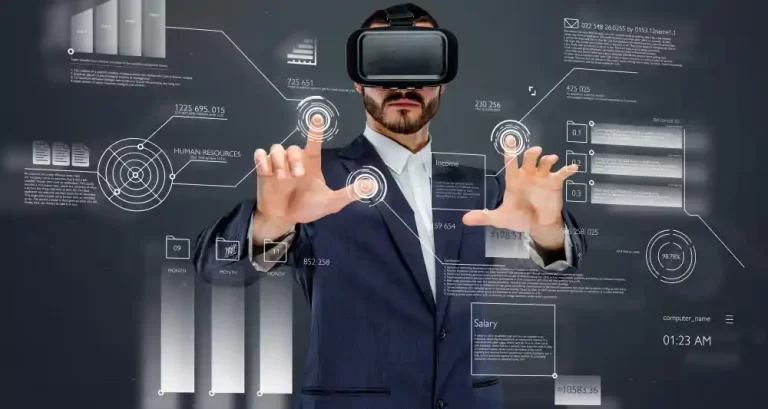The last few decades have seen a phenomenal advancement in technology. We have witnessed technology developments that, even a few decades ago, would have appeared like science fiction, such as smartphones, electric automobiles, drones, and even space exploration. But there are still a lot of places where we fall short. We shall examine some of the key instances in this essay where technology has fallen short of its potential.
The promises of tech innovation
Innovation in technology has the potential to completely transform the way we communicate, live, and work. We have the opportunity for greater effectiveness, more production, and more convenience with every new development. Almost every element of our life has been impacted by technology, from the internet to cellphones to AI-powered devices.
It has paved the door for innovative medical treatments and cures, uncovered fresh corporate development prospects, and changed the way we take in and enjoy entertainment-related material. Technology is an interesting and promising field for the future since it has limitless potential as long as we keep innovating.
Gaps In The Tech World
Ethical Considerations
It is imperative that we discuss the ethical issues that arise as technology develops. Questions of bias, accountability, and transparency are raised by the advancement of machine learning and artificial intelligence. Similar worries regarding privacy and civil liberties have been raised by the usage of facial recognition technologies.
To ensure that these technological developments are used for the greater good and that the possibility of misuse is minimised, it is crucial to establish ethical standards in technology. We can ensure that new technological advancements are applied ethically and responsibly by emphasising transparency, explainability, and accountability during the development process.
Access and Equity
Technology needs to take equity and access into account. Even though several technology developments have made our lives simpler and more convenient, it’s crucial to make sure that everyone has access to these tools on an equitable basis. Making sure that people in rural or low-income areas have access to high-speed internet and other essential technology is part of this.
Different demographic groups have varying degrees of access to technology and online services, which has raised worries about the digital gap between them. In order to ensure that everyone has the chance to benefit from technology breakthroughs and that access and equity discrepancies are kept to a minimum, it is crucial to address these challenges.
Privacy and Security
In the world of technology, privacy and security are two major issues. It’s critical that individuals have control over how their information is used and safeguarded given the growing amount of personal information being shared and kept online. Companies have an obligation to secure the data they gather, store, and utilise while being open and honest about their intentions.
Furthermore, data breaches and cyberattacks can have major repercussions, therefore it’s critical to take precautions to avoid them. To protect people and organisations from damage and uphold confidence in the digital world, it is crucial that technology ensure privacy and security.
Dependence on Technology
As technology becomes increasingly ingrained in our daily lives, there is growing anxiety about our growing reliance on it. We depend on technology for entertainment, communication, and even everyday chores like grocery shopping and banking. While technology has improved many elements of our life, it’s vital to think about the possible negative effects of this dependence. One of the main issues is that it might result in a loss of knowledge and abilities.
For example, a loss in writing and language abilities may result from the widespread use of spell-check and grammar-check technologies. Our dependence on technology may also lead to less social interaction, which may be detrimental to our mental and general well-being. A healthy relationship with technology depends on finding a balance between utilising it for its advantages while still keeping our skills and social relationships.
Job Displacement
Potential job displacement is one of the main effects of technology advancement. Some employment may become outdated as automation and AI grow more common in the workforce, and employees may need to adapt to new roles or industries. Significant economic and societal effects may result from this, especially for people who are unable to get education or training for new occupations.
Furthermore, there is worry that employment loss can worsen already existing inequities because some industries or demographics may be more negatively affected than others. It’s critical to take into account these possible outcomes and to create plans to assist workers who might be replaced by technology improvements, such as retraining programmes and job placement services.
Cyberbullying and Online Harassment
Cyberbullying and online harassment have risen as a result of social media and technology development. Serious repercussions from these actions may include emotional suffering or even suicide. Cyberbullying can take many different forms, including sending unpleasant or threatening communications, disclosing private information without permission, or publishing defamatory or destructive content about another person.
Online interactions’ perceived remoteness and anonymity can make it simpler for people to engage in these destructive behaviours without being held accountable. It’s important to inform people about the effects of cyberbullying and online harassment as well as to offer services to those who have already been subjected to it. Additionally, laws and rules can be implemented to deter these crimes and hold offenders responsible for their deeds.
Digital Addiction
The issue of digital addiction is getting greater attention as technology becomes more pervasive in our lives. It describes the compulsive use of technology, including video games, social media, and smartphones, to the point where it interferes with daily tasks and obligations. Digital addiction can have a significant influence on physical health, such as eye strain and altered sleep habits, as well as mental health, including anxiety and sadness.
In order to control technology use, one must be aware of the symptoms of digital addiction, which include a constant urge to check alerts and a tendency to lose track of time while using technology. Some management strategies include establishing limits on screen time or taking regular breaks from technology. Maintaining a positive connection with technology requires striking a balance between its advantages and constructive routines and behaviours.
Education and Digital Literacy
In today’s technology-driven environment, education and digital literacy are crucial. It’s critical to give people the knowledge and abilities they need to successfully navigate the digital world as technology becomes more pervasive in our daily lives. Understanding how to utilise technology wisely and successfully, as well as having the ability to assess online content critically, are all parts of digital literacy.
Education and training programmes can provide people the skills they need to flourish in the digital age and can help close the digital gap for those who might not have access to technology or education. Promoting digital literacy can also encourage ethical technology use while assisting in the fight against problems like fake news and disinformation. Making educational and digital literacy investments is essential to ensuring that people have the skills and knowledge necessary to succeed in a world that is driven by technology.
Conclusion
Although technology has significantly advanced and innovated in many different domains, there are still many areas where we fall short. There is a lot of work to be done to close the gaps in the IT world, from the digital divide to education, healthcare, cybersecurity, environmental effect, and social impact. However, we can get closer to a technology future that is more just and sustainable if governments, non-profit organisations, and the business sector work together.

























+ There are no comments
Add yours